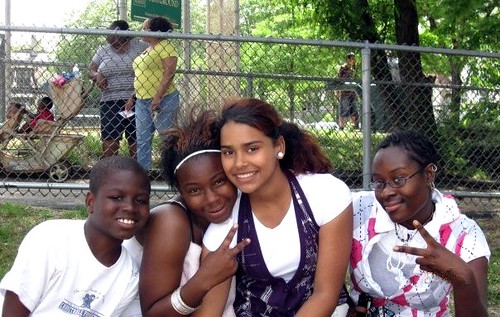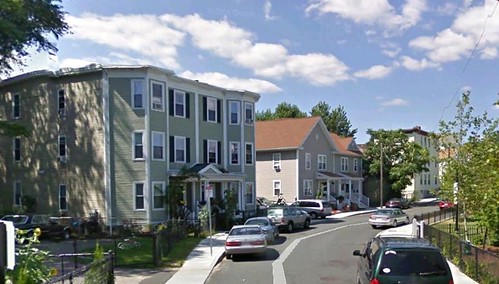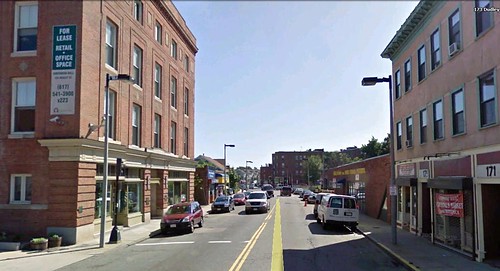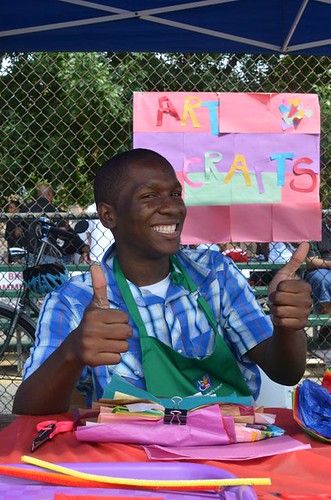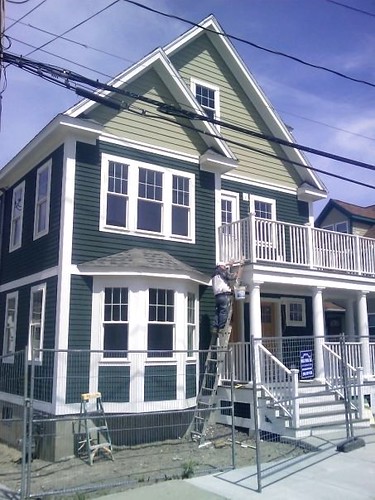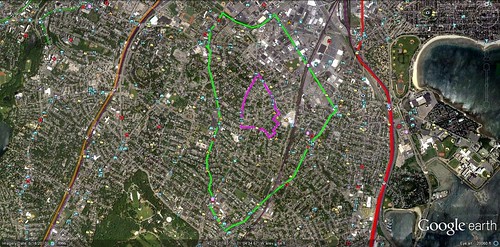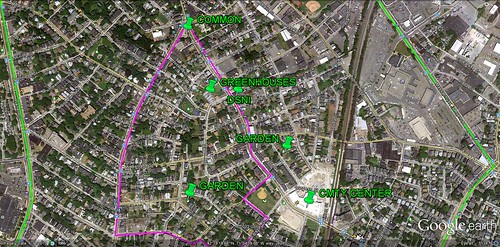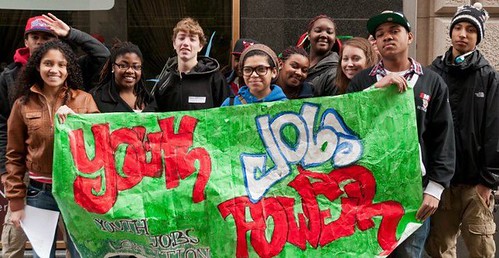A remarkable grassroots revitalization matures and thrives in Boston

Posted March 26, 2012 at 1:24PM
About a decade ago, three NRDC colleagues – Jutka Terris, Nancy Vorsanger and myself – published a book of early examples of smart growth that had sprung up across the country and were beginning to serve as models for how America could simultaneously become more beautiful, more livable, and more environmentally sound. We called our book Solving Sprawl, and it detailed projects and initiatives in cities, suburbs, and in rural conservation.
If I had to pick a single story from the 35 that we profiled in depth as the most compelling of them all, it would be that of the Dudley Street neighborhood, about two miles south of Boston's downtown and one of the city's poorest. While our book celebrated a number of newer and more upscale neighborhoods with smart, green features, we thought Dudley Street was a great model precisely because it was not new or affluent:
“The characteristics that make a city neighborhood great are by no means restricted to upscale developments. Indeed, sometimes older, low- or moderate-income neighborhoods exhibit greater continuity and stronger bonds – a stronger sense of what we call ‘community’ – than do those with higher incomes. As a result, they can sometimes be the source of extraordinary achievement in urban revitalization. There may be no more inspiring example of this than the neighborhood surrounding Boston’s Dudley Street, an avenue that runs through the city’s Roxbury district.”
I forget which one of us wrote that opening paragraph – I recall that Jutka found the story – but the Dudley community’s continuing achievements have only confirmed our instincts about it.
Amazingly, this distressed neighborhood began organizing to save, restore, and improve its community fabric back in the 1980s, long before “revitalization” or “smart growth” had become part of the everyday lexicon of planners and environmentalists such as yours truly. Plagued by severe disinvestment, illegal dumping of all sorts of waste, and with more than a third of its lots vacant, the Dudley residents over a period of several years got rid of the trash, stopped the dumping, gained control of the vacant properties, and undertook long-term planning based on the community’s own vision of an “urban village.”
We noted that, over time, the citizens – operating as the Dudley Street Neighborhood Initiative – formed a community development structure that had built both new and rehabbed affordable housing, created a community "town common" (actually two of them) and play spaces, spawned a popular farmers’ market, and successfully lobbied for the reopening of a formerly closed commuter rail station. All sorts of participants deserve credit for the neighborhood's renaissance but special mention must be made of the Boston-based Riley Foundation, which had become interested in investing in the district and was persuaded to cede oversight of its efforts to a board led by the area’s residents. That was the key first step.
I’ll get into more detail as I update the neighborhood’s many accomplishments, but any reporting of the Dudley story would be incomplete without first mentioning two remarkable legal circumstances that have greatly facilitated the Initiative’s success: First, the community formed a Land Trust – a kind of entity best known at the time for assembling and holding rural conservation lands, not city properties – to acquire and manage vacant property in the neighborhood. The Trust, called Dudley Neighbors, Inc., assures the continuity of affordable housing in the community by retaining ownership of its acquired parcels, which it makes available to buyers under 99-year leases. And second, Dudley Neighbors sought and obtained the right to be considered a municipal authority able to use eminent domain to acquire abandoned lots from absentee owners. Its status was challenged but upheld after four years of litigation.
The website of the Dudley Street Neighborhood Initiative notes that the community is "a trilingual neighborhood of 5,197 African-American, Latin American, Cape Verdean, and White families speaking English, Spanish and Cape Verdean Creole. It is a remarkable reservoir of multi-generational resident leadership, talent, spirit and determination." The Initiative “has grown into a collaborative effort of over 3,000 residents, businesses, non-profits and religious institutions committed to revitalizing this culturally diverse neighborhood . . . and maintaining its character and affordability.”
The site describes the remarkable community-driven comprehensive revitalization plan (“prioritizing development without displacement”) that was adopted in 1987 (!) and updated in 1996 after a collective urban village visioning process. Central to both the neighborhood and its evolution is a 60-acre parcel (marked in purple on the satellite images below) within which the neighborhood has eminent domain authority. Among the accomplishments:
“Today, the dramatic rebuilding of human, social and physical infrastructure has signaled that this is a neighborhood on its way back. DSNI focuses on three strategic areas: community economic development, leadership development and collaboration, and youth opportunities and development. Talented young adults return to the community in large numbers to play their role in sustaining change.
“To date more than half of the 1,300 abandoned parcels have been permanently transformed into over 400 new high quality affordable houses, community centers, new schools, Dudley Town Common, community greenhouse, parks, playgrounds, gardens, an orchard and other public spaces. Dudley residents are proud of their neighborhood and committed to the continuation of the revitalization effort.”
Particularly noteworthy is a major new community center, New England’s largest, opened last year in the neighborhood. It was built (under guidelines for hiring residents, minorities, and women) with an $85 million gift from the Ray and Joan Kroc Foundation and owned and operated by the Salvation Army.
In addition, the Dudley neighborhood also now sports a 10,000-square-foot community greenhouse; a number of community garden areas; and a small orchard growing apples and pears. There is a “Real Food Hub” to promote a healthy food culture in the community.
But wait, there's more: There is a youth jobs collaborative and youth leadership program. In conjunction with the Boston Promise Initiative, DSNI is beginning a process to improve academic and developmental outcomes for 1,858 youth in the Dudley Village Campus, a 1.3 square mile area with four schools (including a new charter school on Dudley Street, pending approval). And the community, led by DSNI, is participating in planning for the larger Fairmount Commuter Rail Corridor.
The remarkable progress of Dudley Street has been a precursor to successful community-driven revitalization efforts that have followed, such as the great story of Melrose Commons in the South Bronx (certified LEED-ND gold) and the award-winning restoration of Old North Saint Louis.
Fully realizing the dream of a diverse, prosperous Dudley Street community will continue to be a work in progress. For now, this remains a distressed neighborhood. But there is no denying its remarkable progress or the admirable journey of self-determination that is creating it. This story is filled with inspiration and promise, and I am just as pleased to report it today as we were a decade ago.
For an excellent, complete timeline of Dudley Street's history, go here; and for a very good video - produced in the late 1990s, before construction began on the community center - that captures the flavor of the community's story, go here.
Move your cursor over the images for credit information.
Please also visit NRDC’s Sustainable Communities Video Channel.
